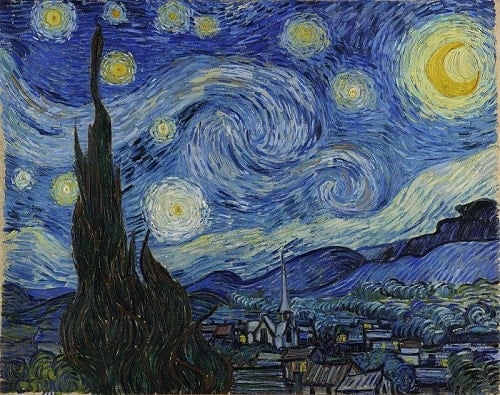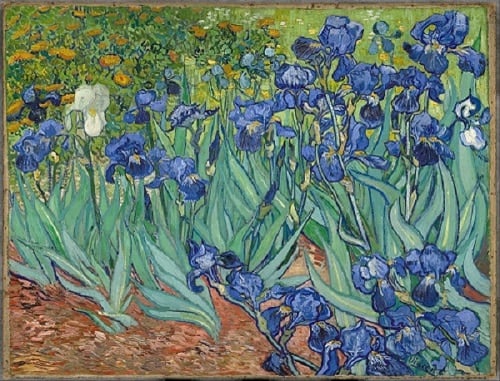Who Was Vincent van Gogh? Vincent van Gogh, a name synonymous with raw emotion and artistic genius, remains one of the most influential painters in history. Known for his vivid colors, expressive brushstrokes, and deeply personal works, Van Gogh revolutionized the art world despite his short and troubled life. In this blog, we explore his extraordinary journey—a story of passion, hardship, and unparalleled creativity that continues to inspire artists and art lovers across the globe.
Early Life: The Making of an Artist Vincent Willem van Gogh was born on March 30, 1853, in Zundert, Netherlands. Growing up in a middle-class family, Vincent displayed a deep sensitivity to the world around him but struggled to find his path. Early on, he worked as an art dealer, teacher, and missionary, but he was continually drawn to artistic expression. It wasn’t until his late twenties that he fully committed to becoming a painter, a decision that would forever change art history.
Van Gogh’s early works, created during his time in the Dutch countryside, were somber and dark, reflecting the struggles of working-class people. Pieces like The Potato Eaters (1885) exemplify his commitment to portraying the harsh realities of rural life. At this stage, Van Gogh’s palette was far from the vibrant colors that would later define his style.
The Paris Years: A Burst of Color and Influence In 1886, Van Gogh moved to Paris, where he lived with his brother, Theo van Gogh, an art dealer who supported him both emotionally and financially. During his time in Paris, Vincent was introduced to the works of the Impressionists and Post-Impressionists like Claude Monet, Camille Pissarro, and Paul Gauguin. Their emphasis on light, color, and brushwork had a profound impact on Van Gogh’s evolving style.
It was in Paris that Van Gogh began experimenting with brighter colors and short, energetic brushstrokes. His works like Self-Portrait with a Straw Hat (1887) showcase this artistic transformation. Paris gave him the tools to blend emotion with technique—a combination that would soon define his masterpieces.
Arles: The Golden Period of Van Gogh’s Art In 1888, Van Gogh left the chaos of Paris for the calm of Arles, a small town in the south of France. It was here that he produced some of his most celebrated works, inspired by the vibrant colors of the Provencal landscape. During this period, Van Gogh painted over 300 pieces, including famous paintings such as:
-
The Yellow House (1888)
-
The Bedroom (1888)
-
Sunflowers series (1888-1889)
Source: Wikimedia Commons
Van Gogh’s fascination with the natural world is evident in every brushstroke. His unique use of yellows, blues, and greens captures not just the scene but the emotions tied to it. However, this period of intense creativity was accompanied by growing emotional instability. His friendship with fellow artist Paul Gauguin deteriorated, culminating in the infamous incident where Van Gogh severed part of his own ear.
Vincent van Gogh and Mental Health: Art Through Suffering Van Gogh’s struggles with mental health are well-documented and deeply intertwined with his art. Following the ear incident, he voluntarily admitted himself to the Saint-Rémy-de-Provence asylum in 1889. During his stay, he continued to paint prolifically, creating some of his most iconic works, including:
-
Starry Night (1889), a swirling masterpiece of emotion and color

Source: Wikimedia Commons -
Irises (1889), an ode to the beauty of nature amidst turmoil

Source: Wikimedia Commons
Van Gogh’s ability to channel his inner turmoil into his art remains unparalleled. His paintings from this period are not only visually stunning but also emotionally raw, giving viewers a glimpse into his troubled yet brilliant mind.
The Final Days: Vincent van Gogh’s Tragic End In May 1890, Van Gogh moved to Auvers-sur-Oise, near Paris, under the care of Dr. Paul Gachet. Here, he painted some of his most profound works, including Portrait of Dr. Gachet and Wheatfield Under Thunderclouds. Despite his artistic success, Van Gogh remained plagued by feelings of loneliness and despair.
On July 27, 1890, Van Gogh reportedly shot himself in the chest. He passed away two days later, on July 29, 1890, at the age of 37. His last words to his brother Theo were reportedly, “The sadness will last forever.”
The Legacy of Vincent van Gogh Though Van Gogh sold only a handful of paintings during his lifetime, his work achieved extraordinary recognition after his death. Today, Vincent van Gogh is celebrated as a pioneer of Post-Impressionism, influencing generations of artists and art movements. His ability to blend color, light, and emotion has made works like Starry Night and Sunflowers timeless masterpieces.
Van Gogh Museum in Amsterdam For art lovers, the Van Gogh Museum in Amsterdam houses the world’s largest collection of Vincent’s paintings and letters. Visitors can explore his artistic journey, from his early works to his final masterpieces, and gain a deeper understanding of his life and struggles.
The Eternal Influence of Vincent van Gogh Vincent van Gogh’s story is one of immense creativity born from suffering. His ability to transform personal pain into universal beauty has made him one of the most beloved and studied artists of all time. From Starry Night to Sunflowers, his paintings are a testament to the enduring power of art to express the human experience.
Van Gogh’s legacy continues to inspire artists, thinkers, and dreamers, reminding us that even in our darkest moments, beauty and brilliance can emerge. As Van Gogh himself once said, “What would life be if we had no courage to attempt anything?”

